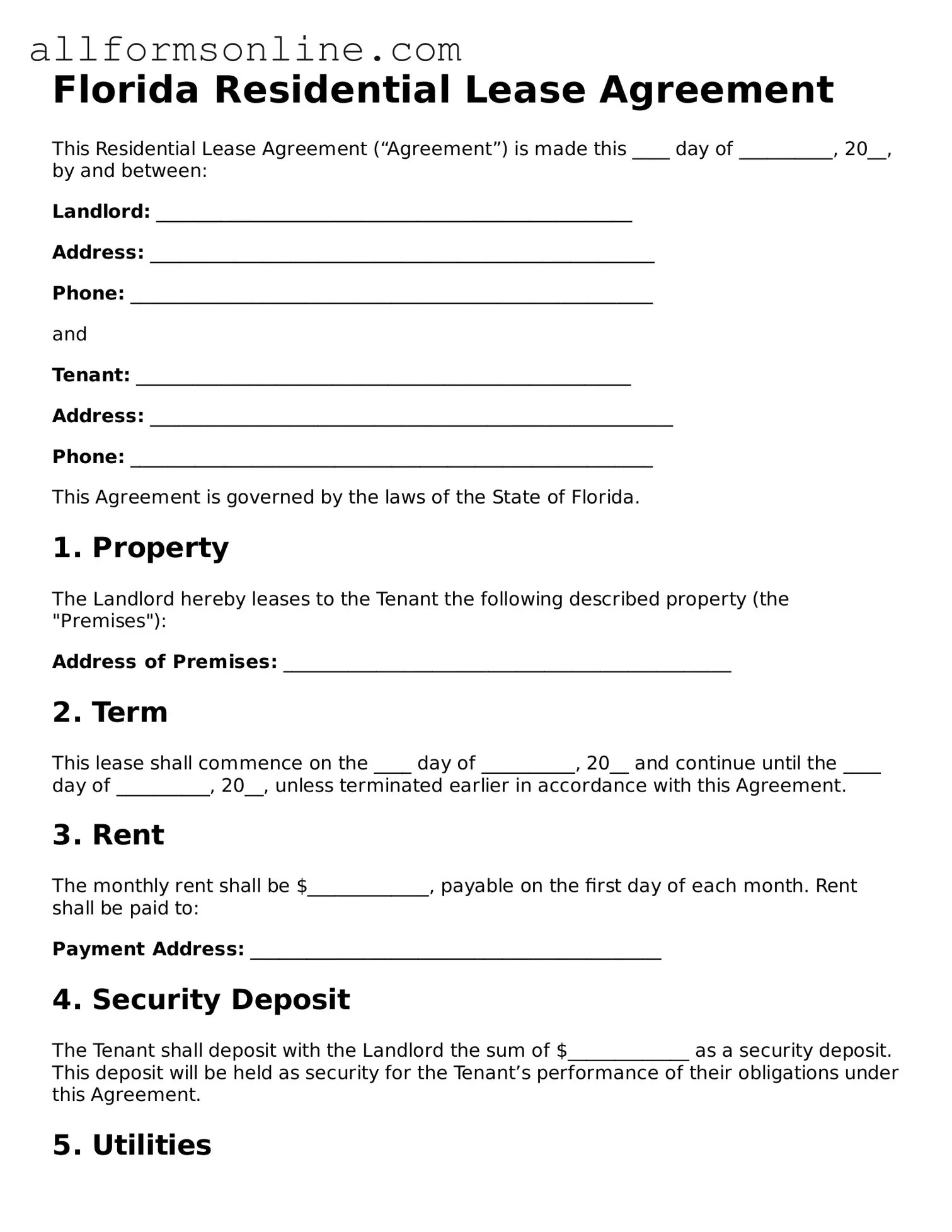What is a Florida Residential Lease Agreement?
A Florida Residential Lease Agreement is a legally binding contract between a landlord and a tenant. It outlines the terms and conditions under which a tenant can occupy a residential property. This document typically includes details such as the duration of the lease, rental amount, payment due dates, and responsibilities of both parties regarding maintenance and repairs.
What are the key components of a Florida Residential Lease Agreement?
Key components of a Florida Residential Lease Agreement include the names of the landlord and tenant, property address, lease term, rental amount, security deposit details, and rules regarding pets and maintenance. Additionally, it may specify the consequences of late payments, grounds for eviction, and procedures for resolving disputes.
How long is a typical lease term in Florida?
In Florida, lease terms can vary widely. Most residential leases are either short-term (typically one year) or month-to-month agreements. A one-year lease is common, providing stability for both tenants and landlords. Month-to-month leases offer flexibility but may require a shorter notice period for termination.
Is a security deposit required in Florida?
Yes, landlords in Florida often require a security deposit. This deposit serves as protection against potential damages or unpaid rent. Florida law does not specify a maximum amount for security deposits, but it is generally limited to one or two months' rent. Landlords must also provide tenants with written notice regarding the deposit's handling.
What rights do tenants have under a Florida Residential Lease Agreement?
Tenants in Florida have several rights under a Residential Lease Agreement. These include the right to a habitable living environment, the right to privacy, and the right to receive proper notice before eviction. Tenants can also request repairs for any issues affecting their safety or health and must be protected against discrimination.
Can a landlord terminate a lease early in Florida?
A landlord may terminate a lease early under specific conditions, such as non-payment of rent or violation of lease terms. However, they must follow legal procedures, including providing written notice to the tenant. The notice period typically depends on the reason for termination and the lease agreement's terms.
What should I do if I have a dispute with my landlord?
If a dispute arises between a tenant and a landlord, the first step is to communicate directly to resolve the issue. If that fails, tenants may seek mediation or legal advice. Florida law allows tenants to file complaints with local housing authorities or pursue legal action if necessary. Documentation of all communications and agreements is crucial in these situations.
